Office spaces are being reimagined post-pandemic as people return to their offices.
New trends are settling in, keeping adaptability, employee well-being, and long-term ecological responsibility and sustainability, in mind.
Collaborative workspaces for optimum utilization of space, barista-style receptions, bar and drink areas, informal auditorium spaces, private dining areas, hybrid-friendly office spaces, and bringing in nature as an integral part of workspaces, is what we are looking at.
There is a shift from dull neutrals to more vibrant colors, too.
Basically, as the other space away from home, where one spends considerable productive hours of a day, offices are being made to feel more welcoming and fitted with everything that would afford the employees, not just mental stimulation but also, the recreation/ respite, as the need be.
In this blog, we share some interior design trends for offices from our experts.
While there are several trends we’re starting to see in office spaces, here are some that our experts are loving:
Man’s innate desire to connect with nature is gaining a lot of traction in architectural and interior design these days.
Biophilic designs incorporate natural plants, natural light, and the use of organic materials in a manner that has been proven to enhance the physical and mental well-being of employees.
A surge in creativity and productivity is reported from office spaces that weave nature into their spaces.
Plants not only improve air quality but also reduce the symptoms associated with sick building syndrome, a condition that gets heightened due to inadequate lighting and poor air quality.
The good thing is that biophilic designs are scalable. You could choose to keep just a few potted plants or think of a green wall or vertical garden, green roofs, courtyards, or even nature-inspired artwork and maximization of light.
Simple and aesthetic hack to a more healthy and therefore, productive workforce.
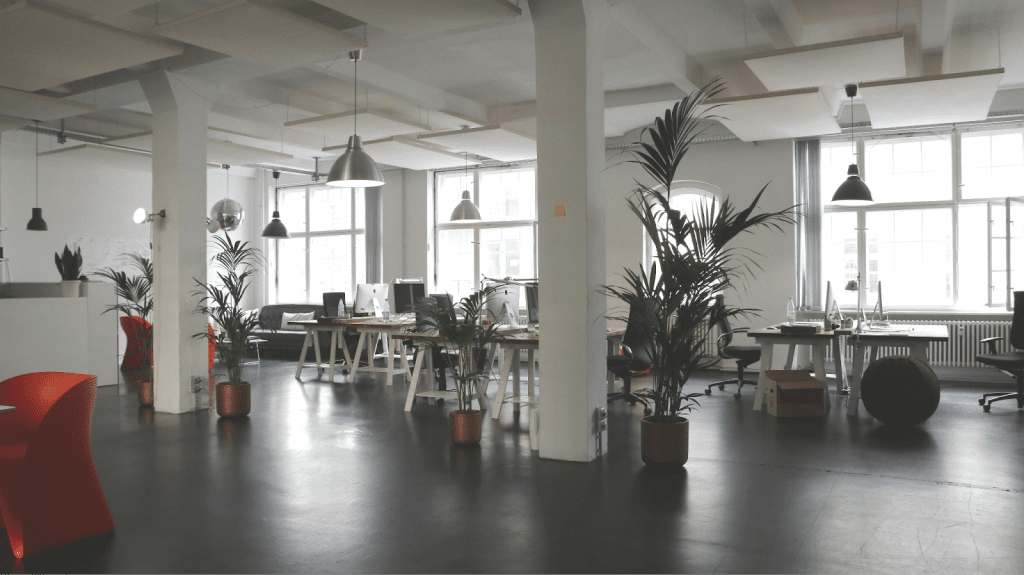
Workspaces are now looking at creating modular collaboration spaces that can be easily configured to suit different team sizes and tasks.
What’s catching up as a trend on the upswing are movable desks, modular seating, and configurable layouts. Rigid cubicles and fixed desks are history.
We now have movable walls and acoustic dividers. Shared desks allow employees the freedom to choose where they wish to work on a certain day. Most of these spaces are being equipped with cutting-edge technology like high-tech, audio-visual equipment for video conferencing and presentations, along with digital whiteboards.
This integration of technology with the comfort of space helps with better communication and ideation. This is a step towards accommodating neurodiversity in workplaces by bringing in some variety in the sensory scapes.
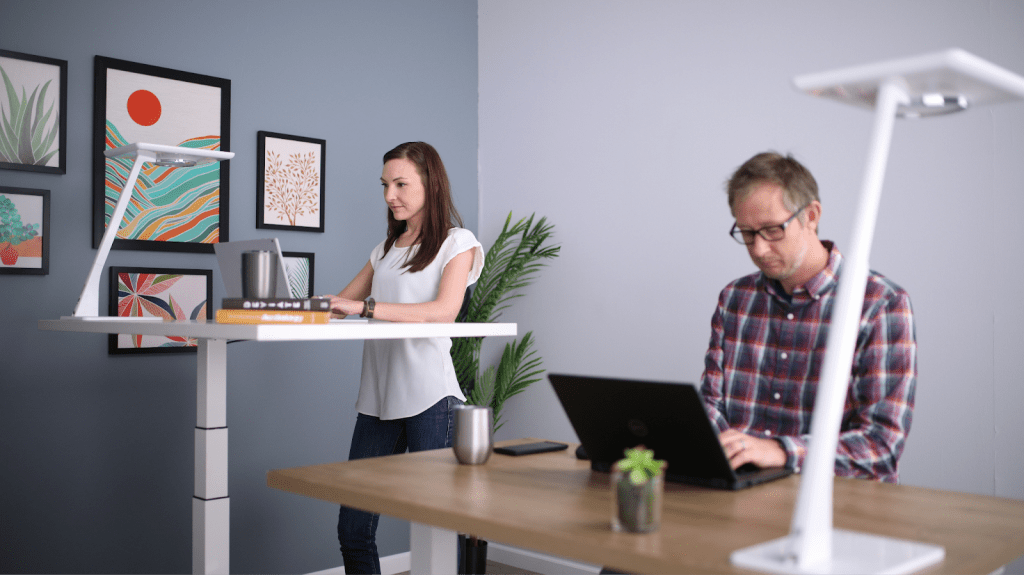
In this era of conscious consumerism, an eco-friendly workspace can go a long way to building a positive brand image.
Offices have started to pay attention to their role as good stewards of the earth trying to reduce their carbon footprint. The many practices that are now being followed are responsible waste management and recycling programs, low-emission paints/ adhesives/ furniture/ flooring, use of renewable energy like solar panels wherever possible.
Green roofs or living walls for energy conservation, water-refilling stations to discourage the use of plastic bottles, bike racks, and electric vehicle charging stations.
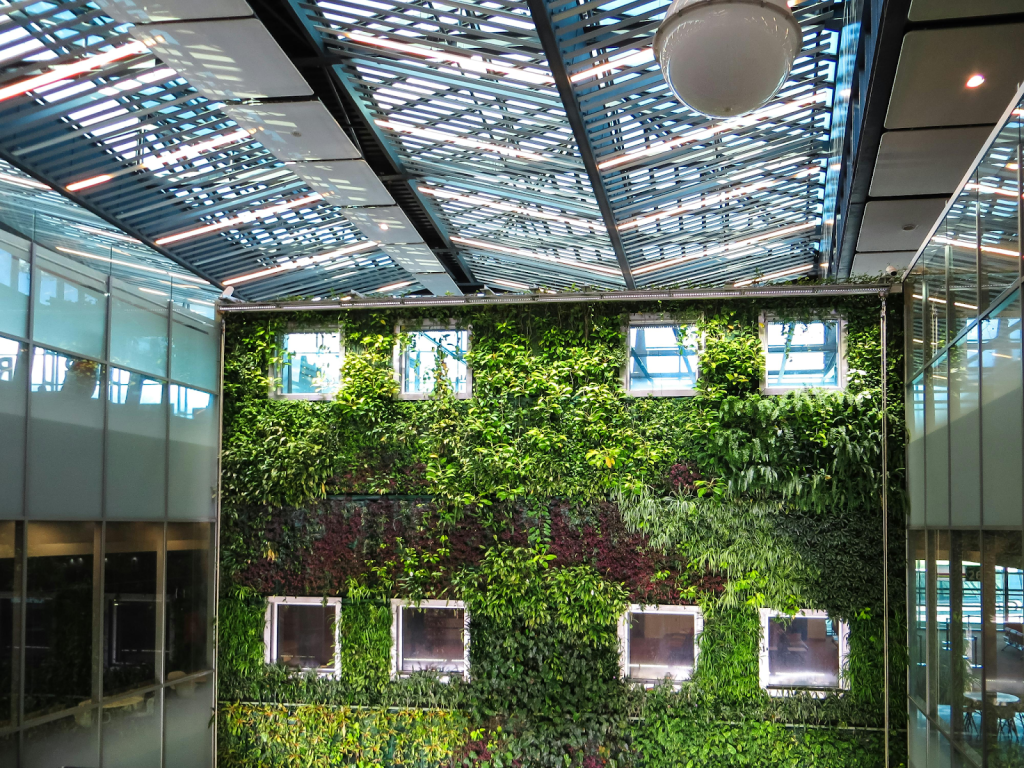
Intelligent and responsive environments are a need of the hour. This helps in enhancing employee productivity.
Traffic flow analysis, for instance, can help better space planning. Smart LED lighting, sensor-enabled ones, will save energy and help with the good steward role that companies have started to work towards, increasingly.
Temperature control is another enabler of a good work environment where the employees feel comfortable investing in long hours of work.
Digital signages and room/pathfinders are not just for ease of locating a place but are visually pleasing too.
Voice-assisted technology like Alexa for a total, hands-free experience of playing/ regulating/ asking what you want, is a huge convenience and saves a lot of time too.
Setting up phone booths, interactive screens and video conferencing systems are other ways in which technology is being incorporated into workspaces. These amenities provide for privacy on the one hand and teamwork, and a sense of well-being on the other. Data insights allow workspaces to make dynamic changes and upgrades as per individual/ group requirements.
The lines between work and life have blurred. People spend a lot of time in their workspaces and the stress has compounded over the years.
What has been set into motion are some practices like setting up collaborative spaces for bolstering social connections and building community.
While designing offices, setting up private spaces for relaxation or quiet focus, spaces for natural light and greenery, and ergonomic furnishings are being factored in.
Some bigger office spaces cater for making walking trails and assigning spaces for making gyms. It is all about creating spaces that reduce stress, foster happiness, and improve the daily experience for the employees.
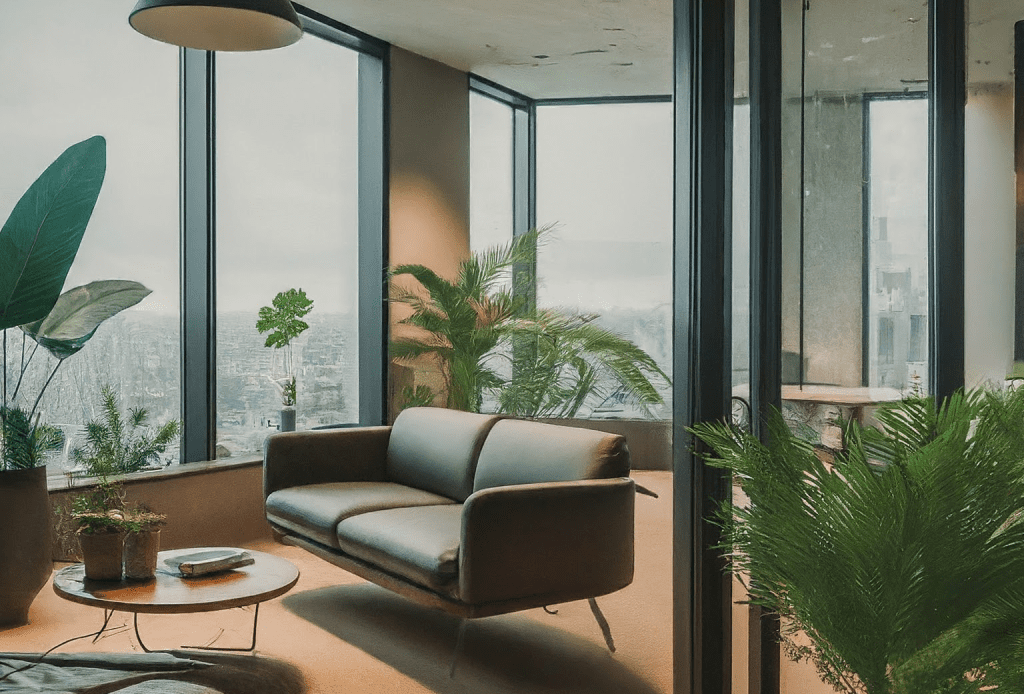
Color palette choices impact employee mood and motivation.
Warm neutrals help to relax and focus. Bright hues and pop colors stimulate and energize.
Cool colors like blue and green have a calming effect. Vivid branding elements on accent walls help with incorporating brand identity into the look and feel of office spaces.
Using colors strategically can optimize productivity by enhancing creativity.
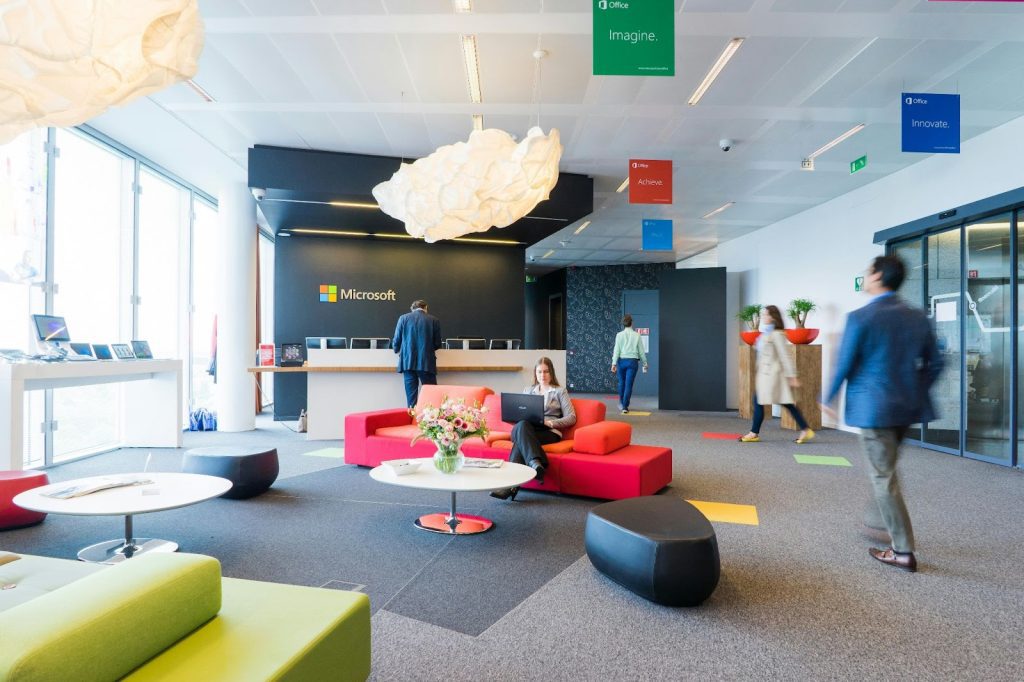
With the growing need to establish a work-life balance, offices have started to integrate amenities that provide for recreation and rejuvenation, alongside work.
It is becoming commonplace to see them setting up gyms, nap pods, cafes, lounges, outdoor spaces, and hidden lounges to help them get in the necessary movement, relaxation, and fun.
Setting up quiet libraries or assigning spaces for meditative practices, helps a lot with those who seek some alone and quiet time from the din and hustle of the office, while at work.
Even breakout areas where you can be louder are designated. Offices have started to encourage transitions from collaboration and events into decompression activities.
Hybrid collaboration areas are necessary for expeditious execution of work.
Bringing remotely placed employees and the regular ones to one place where they can congregate, brainstorm, and execute assigned tasks, is a good way to get things done and foster better intra-personnel relations.
Alternatively, remote collaborative spaces can be used for some focused work by a team, towards a common goal. They come equipped with interactive screens, acoustic controls, comfortable seating, and desks. These can double up as conversation spaces for an unhindered back and forth of words and ideas.
Privacy workplace solutions that are user-control based such as adjustable blinds/ screens are definitely in.
Think phone/ talk booths or pods for complete, unhindered speech and attention – employee privacy is non-negotiable.
Greater attention is being paid to employee privacy concerns. These areas are created to double up as a sanctuary from the bustle of the workplace to take some time out for oneself or to focus on work, as well.
Comfort embedded with technology makes for a haven that fosters well-being. Gender-neutral places like the bathrooms and lactating rooms.
Making arrangements for the differently-abled is another aspect that’s being looked into. Making their movement easy and giving them the necessary space to feel comfortable by making the necessary improvisations in the interiors, is a step towards inclusivity and personalized spaces.
It’s only a matter of time before individual employee pods become the norm.
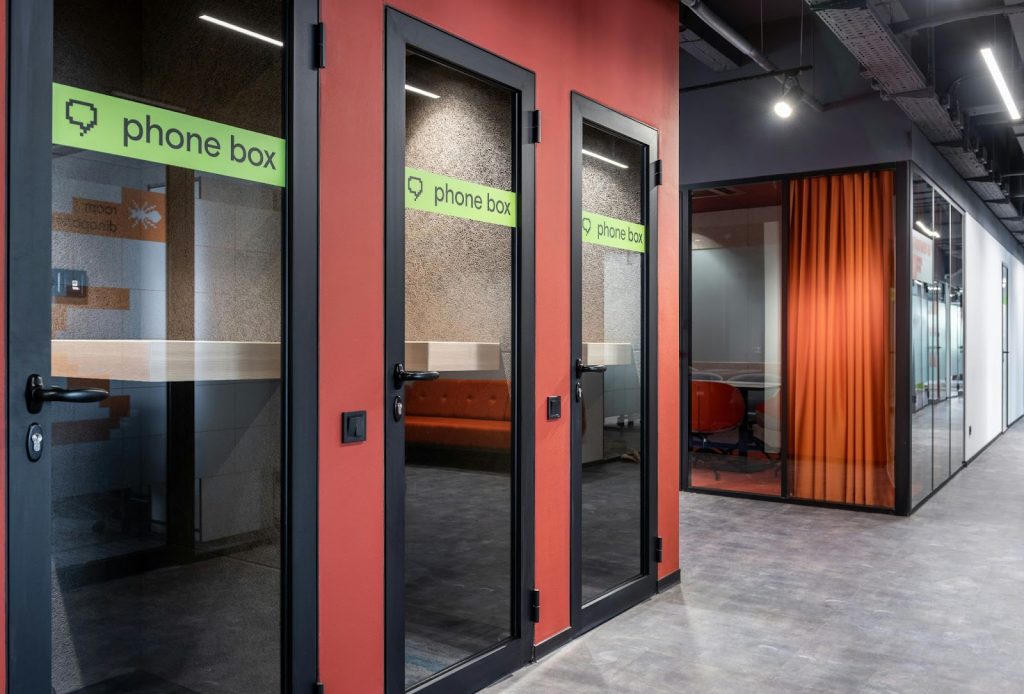
Personalizations can improve morale, increase productivity, and a strong sense of belonging. It fosters a community feel.
Big and small details that resonate with the employees while bolstering the brand/ company’s image, make for an ideal environment for growth.
Paying attention to the kind/ brand of furniture, and getting some custom graphics in place, are some morale boosters for office goers.
Granting employees to do up their workstations in colors, with accents and quirky stationery, makes them feel seen and heard.
Having said this, interior designers come into play at this juncture to ensure that everything blends into the values, culture, and goals of the brand.
Everything is carefully curated and made to look like one cohesive unit. Company logos, wall graphics, and accent colors, a layered approach that starts with neutral base colors moving on to individual palettes that blend in.
Office spaces can’t be one pattern that fits all.
Depending on the size of the brand in terms of the people it employs and the market presence it commands, things have to be tailor-made.
Some will stay with the conventional and improvise to bring in the changes required with the changed times. Other offices may go for a complete overhaul, mindful of the hybrid work culture and employee well-being.
There may be a need to experiment with two or more trends. There is a lot of experiment and a lot of science that’s being put to use in designing office spaces, nowadays. The design market is inundated with choices.
It takes a lot of research to know what will suit the image, values, and ethos of a certain brand.
Taking help from the experts saves you the trouble of researching and the subsequent sourcing and execution. They can give you a budget and a timeline. They offer you the best solutions and make you a blueprint of what to expect.
If you want to remodel or make a new office space, just get in touch with us. We are your one-stop solution for all things to do with making dream offices come to life. Book a consultation and let our experts do the rest.




